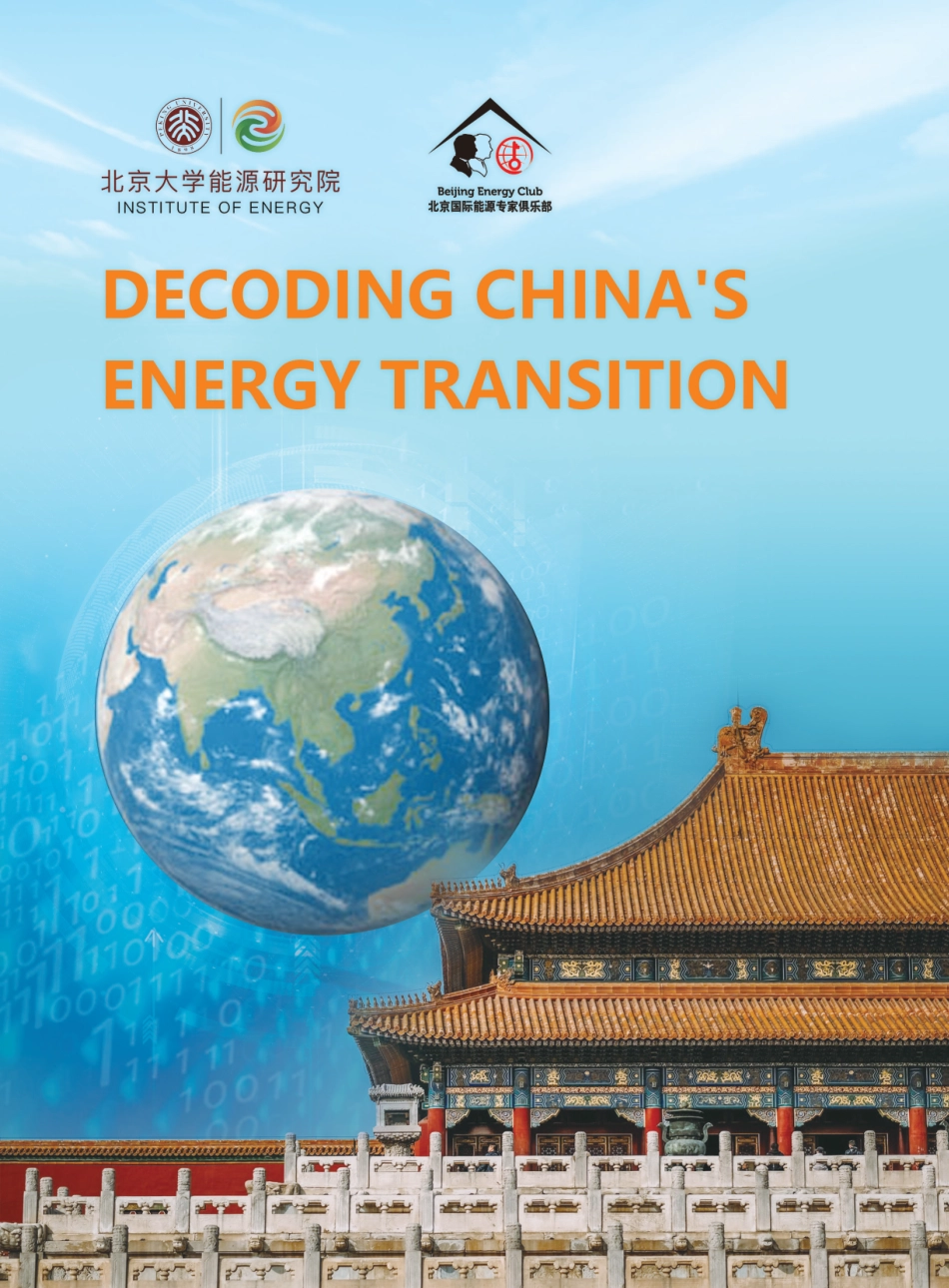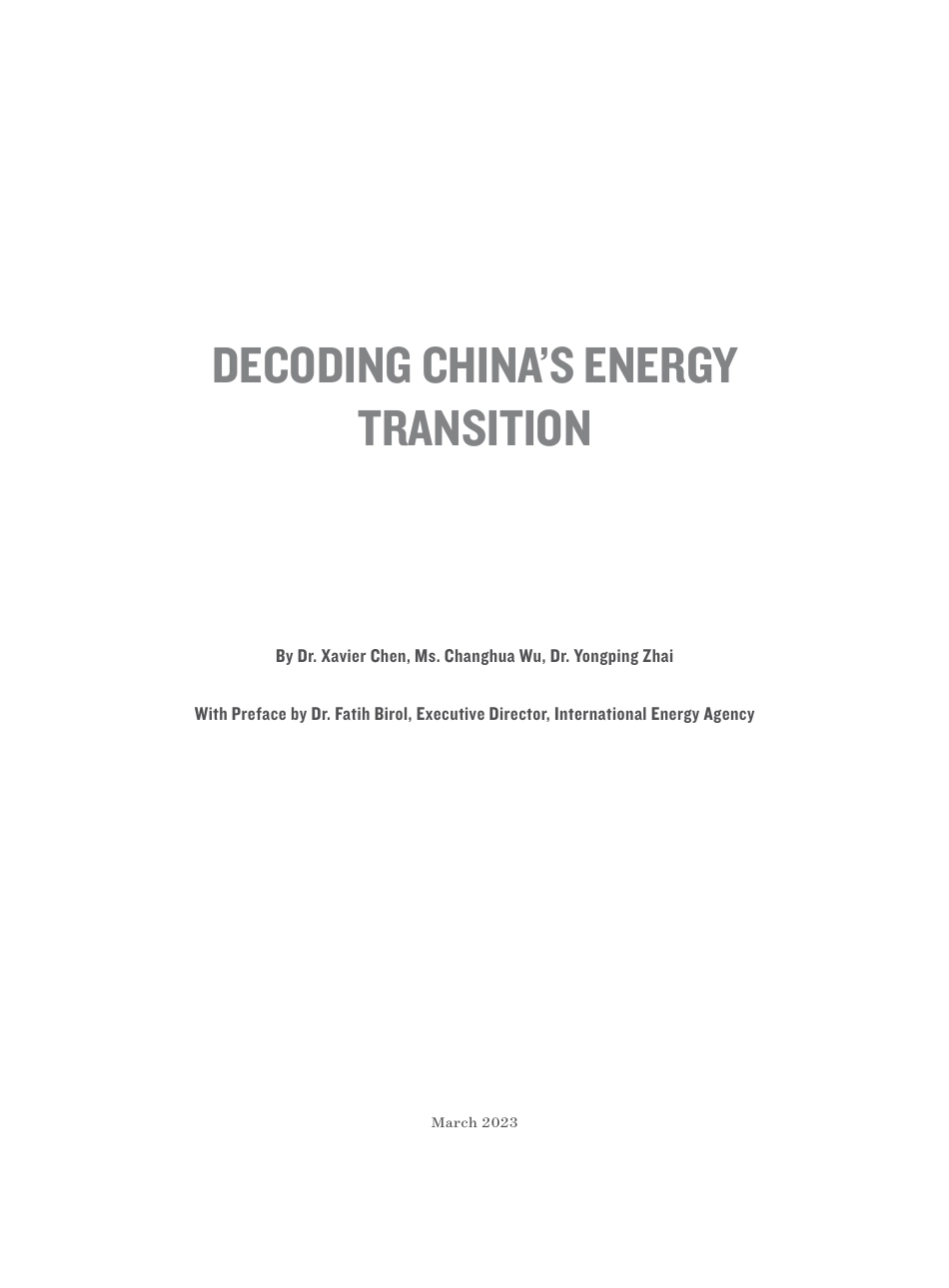DECODING CHINA’S ENERGY TRANSITION By Dr. Xavier Chen, Ms. Changhua Wu, Dr. Yongping ZhaiWith Preface by Dr. Fatih Birol, Executive Director, International Energy AgencyMarch 2023DISCLAIMER: All views and opinions expressed in this report and its components are strictly those of its authors. In no way do they represent those of the Pekin University or the PKU Energy Institute or the Beijing Energy Club.TABLE OF CONTENTSPreface by Fatih Birol, Executive Director, International Energy Agency ������������������������������������������������������������������ixPreface by Chengyu Fu, Executive Vice Chairman, Beijing Energy Club �������������������������������������������������������������������xiForeword by Lei Yang, Vice President, Institute of Energy, Pekin University �����������������������������������������������������������xiiiForeword by Xavier Chen, President, Beijing Energy Club �������������������������������������������������������������������������������������xvChanghua Wu: Making the Complexities Simpler and Easier to Understand ����������������������������������������������������������xviYongping Zhai: Certainty Among Uncertainties ������������������������������������������������������������������������������������������������ xviiChapter 1: Decarbonization Strategies �������������������������������������������������������������������������...



